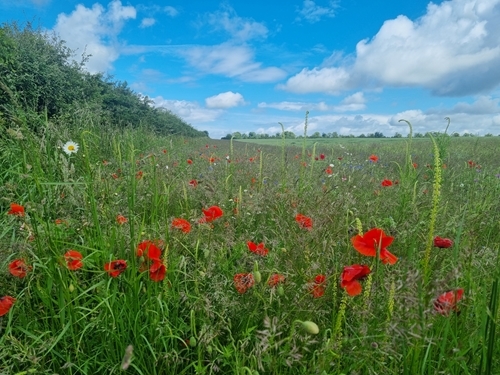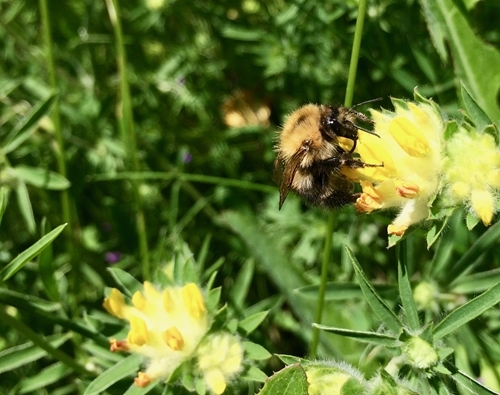Blog written by Jayna Connelly, Farmland Ecology Research Assistant

Pollinator Field Margin Sandringham
It feels to me like summer has come to a rather abrupt end, although some may argue the British summer was rather lacking this year at best.
In some ways, I cannot deny this—my pollinator field sheets were certainly emptier than I had hoped for, and my thoughts go out to female solitary bees and bumblebee queens hidden underground, in leaf litter, and tussocky grass, hibernating until spring comes again. I do hope, for their sake and many others, that our coming weather is kind to them.
While it may seem like wildlife is winding down for the year, there are still things we can do for our countryside neighbours. Now is the time to plant wildflower seeds! Planting them before the first frost gives them time to settle in, and germination can be triggered by the cold so that they are ready to flower next spring. The species you are planting may be impacted by your soil type, size of plot and location. Whatever the case may be for you, it is important to think about providing a variety of floral structures. Open flowers such as daisies, knapweed and poppies are great for bees with shorter tongues. Conversely, long-tongued bees will benefit from bell-shaped plants such as trefoils and vetches. Consider species that have a variety of flowering times too, some ivy species are among the latest to flower and can help provide food during this time of scarcity. For more ideas visit: RHS Plants for Pollinators - British wildflowers.

Common Carder bee on Kidney Vetch
Many of us may have bird feeders in our gardens to help species such as blue tits fatten up for winter. While these are heavily relied upon by many garden favourites, it is important to remember that not all of the species that call the UK home over winter have the same needs. Many rely on seeds, insects, and berries that are not found in our feeders. Consider delaying cutting a hedge if it is showing signs of fruiting, until after our wildlife has had a chance to get their fill.
Blackberries have come out rather early this year, and the prospect of a blackberry and apple crumble is rather exciting, in my opinion. I am also starting to think about my next batch of sloe gin! These are just two examples of favourites in many households across Britain at this time of year, but it’s important to remember that they are a lifeline for our wildlife. I try to go by the rule of only taking as much as I need, and never more than half of what is available in the area. Think of it as a way to preserve the gifts of nature beyond just the preserves in our cupboard!